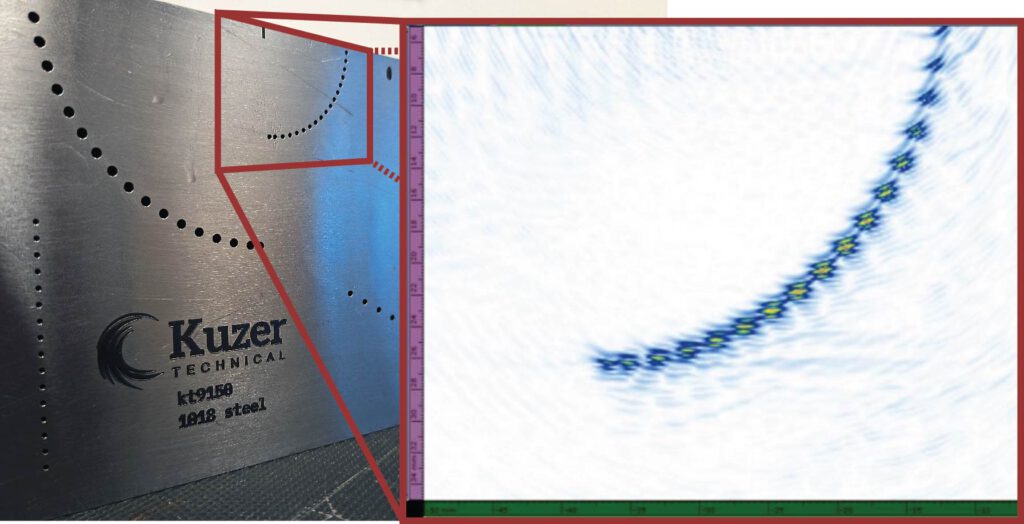New course: TFM, FMC, & PCI – The Future of Advanced PAUT Methods
We are bursting with pride to unveil our latest venture: the Total Focusing Method (TFM) course, a collaboration with the esteemed University of Ultrasonics and Evident Scientific. This course is a culmination of our dedication to excellence and our drive to stay at the forefront of NDT education.
The world of Non-Destructive Testing (NDT) is ever-evolving, with new methods and technologies emerging to ensure the safety and reliability of materials and structures. As an NDT training company, we are thrilled to introduce our newest course focusing on three cutting-edge Phased Array Ultrasonic Testing (PAUT) methods: Total Focusing Method (TFM), Full Matrix Capture (FMC), and Plane Wave Imaging (PCI).

What are TFM, FMC, & PCI?
1. Total Focusing Method (TFM) TFM is a revolutionary technique that utilizes the entire data set collected during an inspection to produce high-resolution images. Unlike traditional methods that rely on fixed focal laws, TFM adapts and recalculates focal laws for every pixel, ensuring a more detailed and accurate representation of the inspected area.
2. Full Matrix Capture (FMC) FMC, as the name suggests, captures the full matrix of data between every transmitter and receiver element in a PAUT array. This comprehensive data capture allows for post-processing flexibility, making it possible to apply various imaging techniques and focal laws after the data is collected.
3. Phase Coherence Imaging (PCI) is an ultrasonic technique that relies solely on phase information of A-scans to generate a TFM image. The process involves normalizing acquired A-scans, comparing their phase distribution in the TFM zone, and identifying defects based on coherence levels between A-scans. This method effectively distinguishes defects from high-frequency background noise, making it especially useful for detecting small flaws in challenging materials and enhancing common inspections like weld checks.
Why Are These Methods Important?
The integration of TFM, FMC, and PCI into the PAUT framework elevates ultrasonic testing to new heights. These methods offer:
- Enhanced Image Resolution: The ability to focus on every pixel and the comprehensive data capture ensures detailed imaging, which is crucial for detecting minute defects.
- Flexibility: With FMC, data can be post-processed using different techniques, making it adaptable to various inspection needs.
Who Should Attend Our Course?
Our course is tailored for:
- NDT professionals looking to expand their skill set.
- Companies aiming to integrate advanced PAUT methods into their inspection procedures.
- Individuals passionate about staying updated with the latest in the NDT realm.

A comparison of FMC vs PCI on indications from High-temperature hydrogen attack (HTHA). These flaws occur from occurs when steel equipment is exposed to hydrogen at elevated temperatures,
Course Highlights
- Comprehensive understanding of TFM, FMC, and PCI principles.
- Hands-on training with state-of-the-art PAUT equipment.
- Real-world scenarios and case studies.
- Certification upon successful completion.
Conclusion
The advancements in PAUT, particularly TFM, FMC, and PCI, are reshaping the future of NDT. These methods offer a combination of speed, accuracy, and flexibility, making them indispensable tools for modern inspection needs. We invite you to join us on this exciting journey and explore the possibilities these techniques present. Stay ahead of the curve and contact info@kuzer.com enrol in our course today!
Hi im interested , im in Colombia.
best regards.